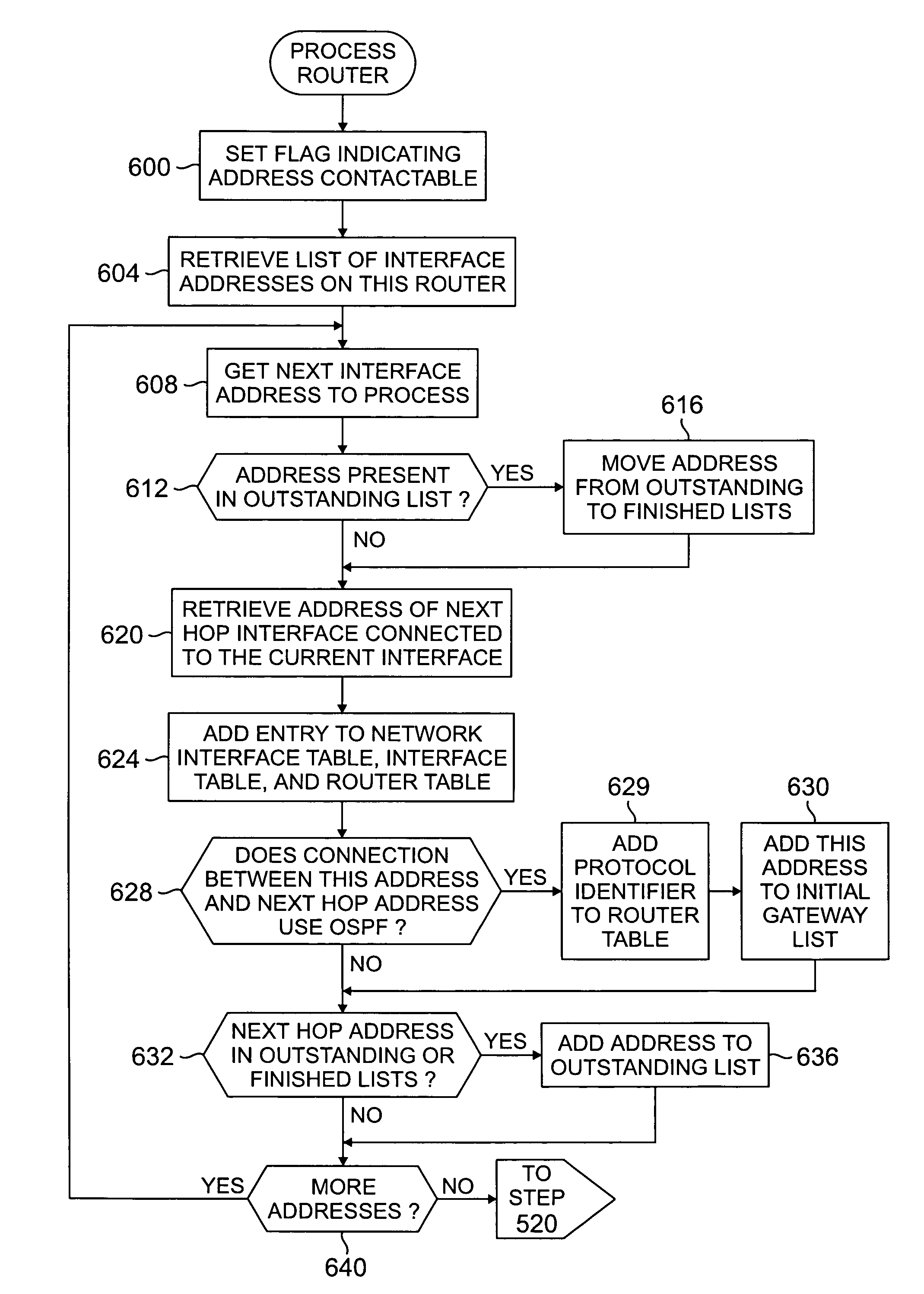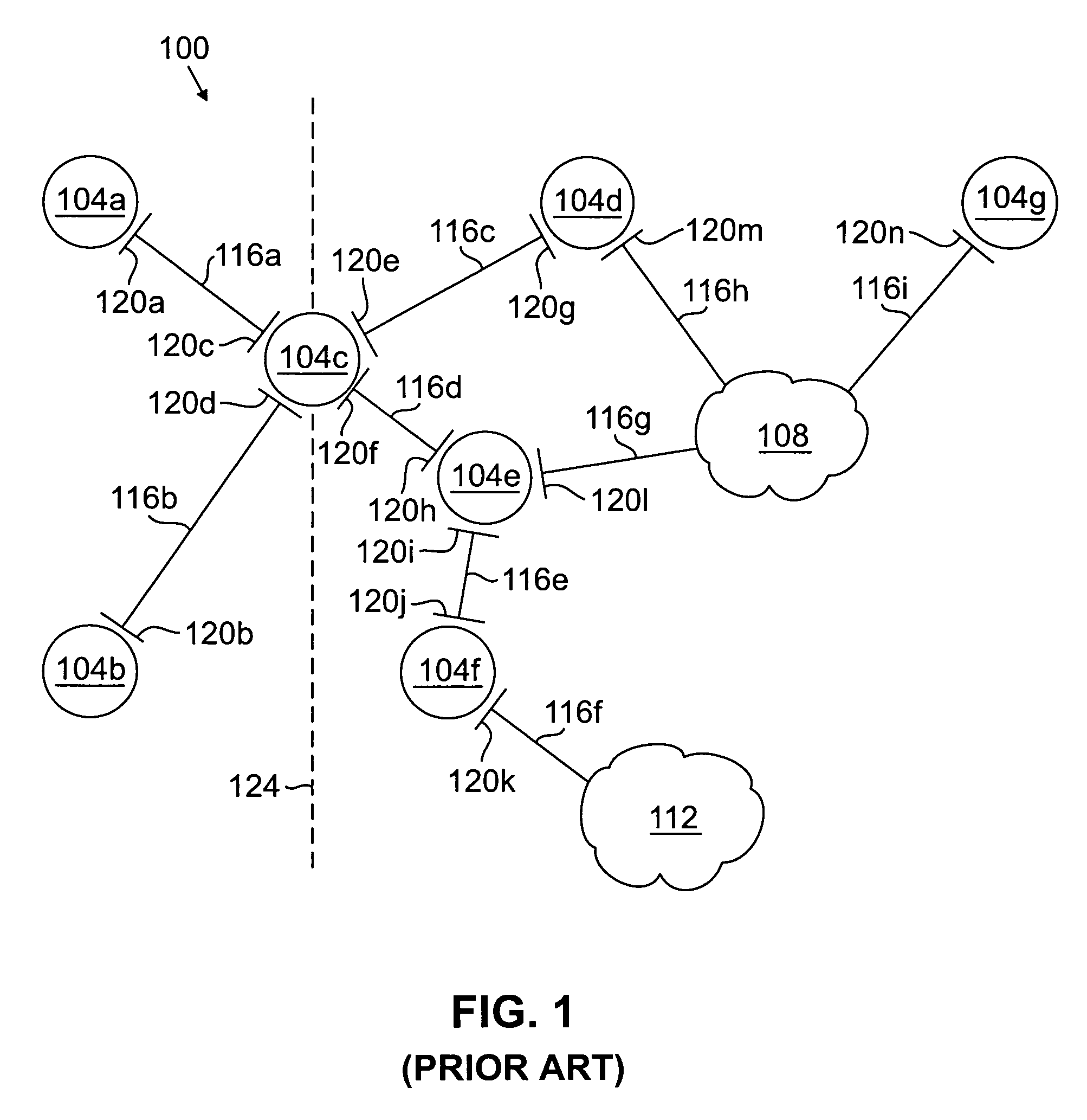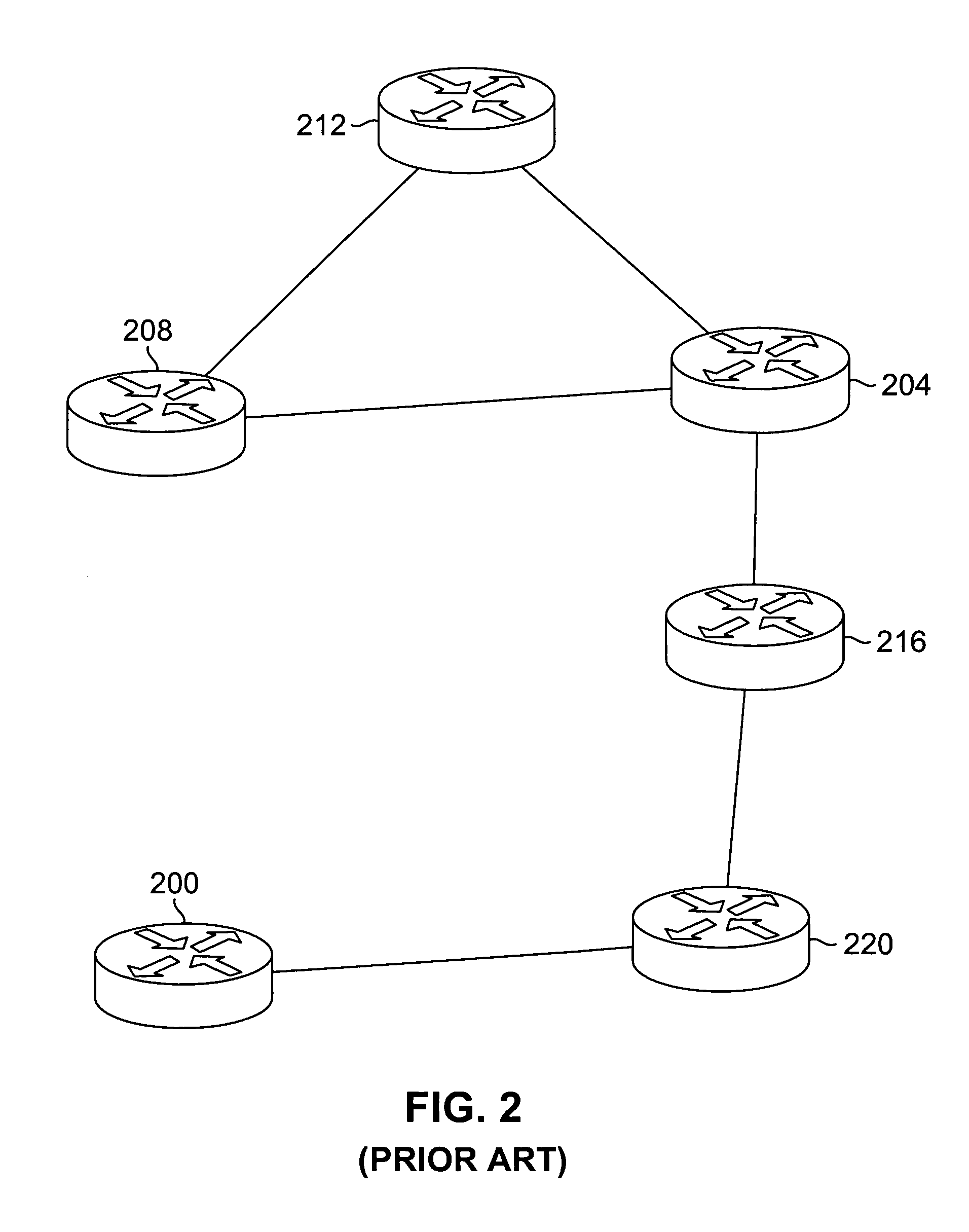Topology discovery by partitioning multiple discovery techniques
- Summary
- Abstract
- Description
- Claims
- Application Information
AI Technical Summary
Benefits of technology
Problems solved by technology
Method used
Image
Examples
Embodiment Construction
[0040]To discover the topology of a network with multiple routing protocols present, a phased discovery approach is employed. There are three main phases required to discover a network topology. In the initial gateway detection phase, the architecture contacts a seed router to initiate the discovery process. In the MIB or MIB2 discovery phase, the architecture contacts each of the routers in the enterprise network to download selected MIB information in the routers. In the OSPF discovery phase, the architecture contacts routers supporting OSPF to download link state advertisements from the link state advertisement database in the OSPF routers.
[0041]Before discussing the operation of the data collection and analyzing agent 208, it is important to understand certain features of many routing protocols. A router can be identified by a unique router ID in the case of certain protocols, and associated with a unique area ID. A router typically does not itself have an IP address. An interfa...
PUM
 Login to View More
Login to View More Abstract
Description
Claims
Application Information
 Login to View More
Login to View More - R&D
- Intellectual Property
- Life Sciences
- Materials
- Tech Scout
- Unparalleled Data Quality
- Higher Quality Content
- 60% Fewer Hallucinations
Browse by: Latest US Patents, China's latest patents, Technical Efficacy Thesaurus, Application Domain, Technology Topic, Popular Technical Reports.
© 2025 PatSnap. All rights reserved.Legal|Privacy policy|Modern Slavery Act Transparency Statement|Sitemap|About US| Contact US: help@patsnap.com



